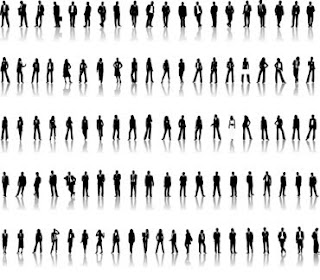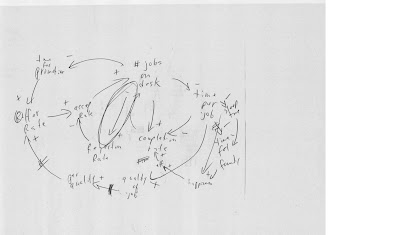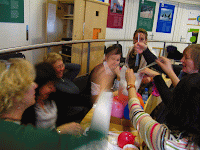What do you notice when you have the opportunity to watch 35 Pecha Kuchas? We have featured these interesting presentation techniques – 20 PPT slides autotimed at 20 seconds each – in different workshop settings in the last few months. Here are some of the things we noticed that made them work:
13 Tips for Pecha Kucha Success
- Practice your Pecha Kucha WITH the timing turned on (don’t just talk through your printed slides to yourself as “practice”.)
- Check particularly how your message for each slide matches the 20 second timing limit.
- Too much information? Think about where you need to break down your message if there is too much information for 20 seconds. For example, run your message over 2 or 3 slides if need be. Think creatively about how your visual can progress with your message development.
- Too little information? If you find that there is too little for 20 seconds, e.g. just a one liner or one brief point, then double up two messages on 1 slide, or think about a quick example to illustrate your short point. Note: Watch that the example doesn’t launch you into a long story which will blow your timing.
- Using diagrams? These can be a good way to snapshot lots of information but be careful with diagrams or graphs that are too complex. Can they be recrafted so the one key message/line/box is bolder? Note that people will not be able to read the little stuff (like all the indices etc.) quickly, so only include what you need for your story. Spread it over 2 slides and use a build. Make a handout for later if people will need the detail, don’t try to go through it in your Pecha Kucha.
- Save time by not using the first slide to introduce yourself, the title of your talk only, or closing with a “Thank you for listening” slide. Just say it quickly. If you want to elaborate on yourself, use a wordle (beautiful word cloud) of your CV or bio to snapshot yourself (here is an example of one I did for myself).
- Watch your computer positioning – make sure the computer is in a place where you can see the screen as a prompt and still face the group, unless you have good peripheral vision and can stand at the side so you can see both the screen and the eyes of your audience.
- Never NEVER read your slides.
- Design thinking – I have seen both slides with only images and no text, and slides with an image and a prompt word. Unless you are very good at picking images and they are very obvious (even quirky can be obvious within your narrative), I think I like the latter. The single word can summarise the point of the image. It is also very effective to only have one or two words on a blank slide (centred or interestingly placed), and perhaps with a black or colour background. In any case, mix it up!
- Interactivity? It is hard in the time allocated to do very interactive work with your audience – you can use hand mapping or voting, or other quick inputs, but if you have to pick on people and wait for an answer, and then if people talk too long, there goes your timing.
- Part of a Pecha Kucha marathon? If your Pecha Kucha is one in a string of PKs, then the organizers might want to pause for a minute (literally) between them and invite people to write down any thoughts, questions, or comments before starting the next one. The organizers could even make a Job Aid of some kind (a card with a matrix, etc.) to help people keep track of where they are in the line-up and their impressions.
- Getting people’s attention – If you do want to engage, then end with a “lesson” unconcluded; with a question, or an invitation.
- Don’t apologize for “not having enough time to go into depth because of this format”; that just says you didn’t prepare well enough.
Everyone should be able to make their point in this day and age of micro-media with an “elevator speech” – and 6 min and 40 seconds is an incredibly generous elevator ride by most building’s standards!









 This morning I went to an interesting Writer’s workshop on publishing – it ran the gamut from traditional book publication to online self-publishing. It reminded me of some of the things that I had learned doing this myself, which I had never recorded. So before I forget, I thought I would blog this experience for my own future reference, and anyone else interested…
This morning I went to an interesting Writer’s workshop on publishing – it ran the gamut from traditional book publication to online self-publishing. It reminded me of some of the things that I had learned doing this myself, which I had never recorded. So before I forget, I thought I would blog this experience for my own future reference, and anyone else interested…

















.jpg)



 8. Test it: Who is the authority who will announce the winner? If appropriate, do you have on hand the “suggested answers” and someone who can explain them?
8. Test it: Who is the authority who will announce the winner? If appropriate, do you have on hand the “suggested answers” and someone who can explain them?



